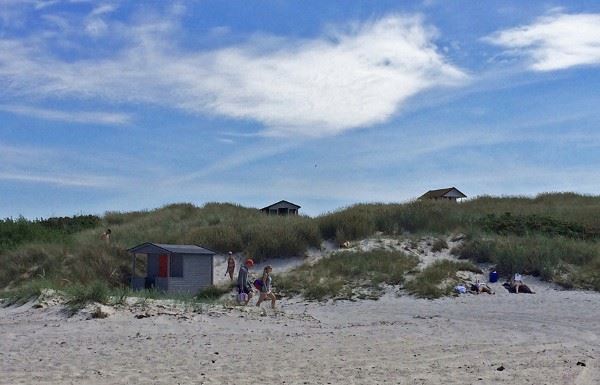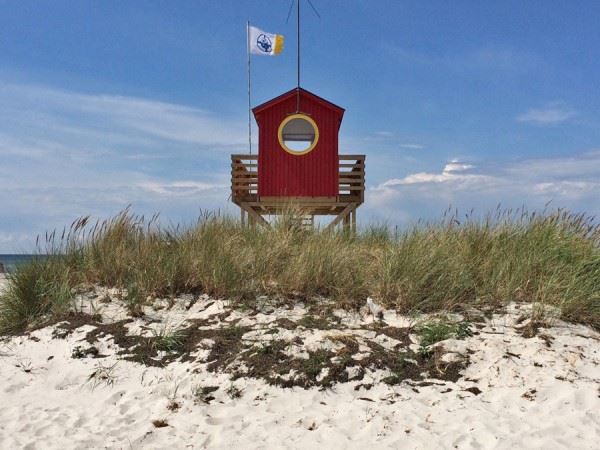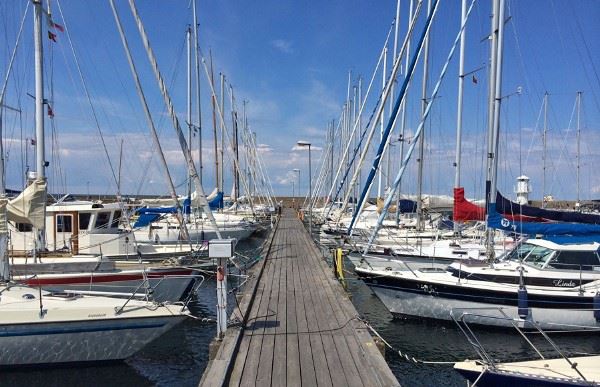Around 150 species and up to three million birds are counted at Falsterbo each autumn. Leaving the far north and flying over land, the Baltic sea is the first major hurdle in their journey back to the tropics and the narrow promontory marks the end of the coastline they’ve been following for days, serving as a natural rest stop. Nabben is the most popular nature reserve for viewing the migration, and though you’ll be able to tick off scores of different species here, the superstars are the birds of prey. Late summer sees the arrival of those travelling furthest – ospreys, honey-buzzards, peregrine falcons and marsh harriers among others – followed predominantly by sparrowhawks in September then red kites and buzzards in October; sometimes up to several thousand per day.
But in the height of the holiday season Falsterbo is all about being by the sea, and back on the beach the vibe is one of laid back, low-key exuberance. Even at the relatively buzzy Skanör harbour it still feels like I’ve just dropped in on an understated local secret rather than a tourist resort, despite the rows of gleaming white yachts and groups of daytrippers queuing outside the fiskhuset. I walk down to the shoreline past the lifeguard hut and let the waves wash over my toes. The short Swedish summer is putting on its best show today, and a light breeze chivvies fat little clouds out of the way of the sun. Behind me sit a cluster of pastel coloured beach huts – not lined up in a nice neat row, but scattered at odd angles amongst the sand dunes like a flock of disoriented sheep. Young mums in Birkenstocks and expensive sunglasses thumb their phones while rubbing suncream into wriggly, already nut-brown children. It’s the archetypal Swedish scene; healthy, wealthy and effortlessly serene – about as far from a moody crime thriller as it’s possible to be. I might stay a bit longer than planned.




